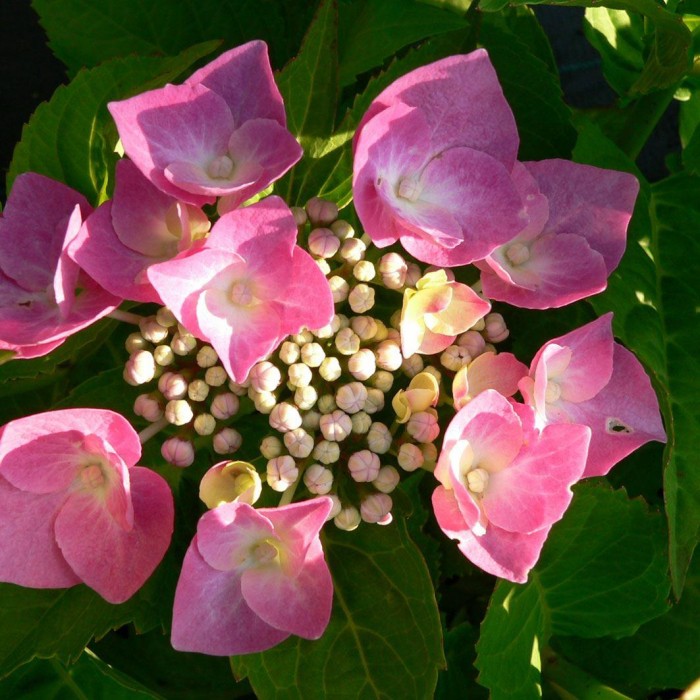The Ultimate Guide To Growing Hortensia Macrophylla
The Ultimate Guide to Growing Hortensia Macrophylla
Hydrangea macrophylla, also known as bigleaf hydrangea, is a popular flowering shrub that is known for its large, showy blooms. These hydrangeas can grow up to 6 feet tall and wide, and they come in a variety of colors, including blue, pink, purple, and white. Hydrangea macrophylla is relatively easy to grow, but it does require some special care in order to thrive.
In this guide, we will discuss everything you need to know about growing hydrangea macrophylla, from choosing the right location to watering and fertilizing. We will also provide tips on how to deadhead your hydrangeas and how to overwinter them in colder climates.
Choosing the Right Location
The first step to growing hydrangea macrophylla is choosing the right location. These hydrangeas prefer partial shade, meaning they should receive some direct sunlight in the morning or evening, but should be protected from the hot afternoon sun. They also need moist, well-drained soil. If your soil is sandy or clayey, you may need to amend it with compost or peat moss to improve drainage.
Planting Hydrangea Macrophylla
Once you have chosen the right location, you can plant your hydrangea macrophylla. Dig a hole that is twice as wide as the root ball of the plant and about as deep. Place the plant in the hole and backfill with soil, tamping it down gently. Water the plant well.
Watering and Fertilizing Hydrangea Macrophylla
Hydrangea macrophylla needs regular watering, especially during hot, dry weather. Water your hydrangea deeply once a week, or more often if the weather is very hot. You can also help to retain moisture by mulching around the base of the plant with compost or bark.
Hydrangea macrophylla also needs to be fertilized regularly. In the spring, apply a balanced fertilizer, such as 10-10-10, to the soil around the plant. You can repeat this application in the fall.
Deadheading Hydrangea Macrophylla
To encourage more blooms, you should deadhead your hydrangea macrophylla regularly. Deadheading is the process of removing spent blooms. You can do this by simply pinching off the spent blooms with your fingers.
Overwintering Hydrangea Macrophylla
If you live in a cold climate, you will need to overwinter your hydrangea macrophylla. To do this, you can cut the plant back to about 6 inches tall and then mulch around the base of the plant with a thick layer of organic matter, such as straw or leaves. This will help to insulate the roots and protect them from the cold.
Conclusion
With proper care, hydrangea macrophylla can be a beautiful and long-lived addition to your garden. By following the tips in this guide, you can help ensure that your hydrangeas thrive for years to come.
If you are interested in learning more about hortensia macrophylla, also known as the bigleaf hydrangea, I recommend visiting . This website has a wealth of information about this beautiful flower, including its history, care requirements, and different varieties.
You can learn about the different colors that hortensia macrophylla can bloom in, depending on the acidity of the soil. You can also learn about the different pruning techniques that can be used to shape and maintain your hortensia macrophylla plant.
The website also includes a blog with articles about hortensia macrophylla care, as well as a forum where you can ask questions and get advice from other hortensia macrophylla enthusiasts.
FAQ of hortensia macrophylla
- What is Hortensia macrophylla?
- Hortensia macrophylla, also known as the bigleaf hydrangea, is a popular garden plant native to East Asia. It is known for its large, showy flowers that can be blue, pink, purple, or white.
- How do I care for Hortensia macrophylla?
- Hortensia macrophylla is a relatively easy plant to care for. It prefers moist, well-drained soil and full sun to partial shade. It is important to water the plant regularly, especially during hot, dry weather. The plant should also be fertilized once a month during the growing season.
- Why are my Hortensia macrophylla leaves turning brown?
- There are a few reasons why your Hortensia macrophylla leaves might be turning brown. One possibility is that the plant is not getting enough water. Another possibility is that the plant is getting too much sunlight. Finally, the leaves could be turning brown due to a nutrient deficiency.
- How do I get my Hortensia macrophylla to bloom?
- Hortensia macrophylla blooms in the summer. To encourage the plant to bloom, you should fertilize it regularly with a fertilizer that is high in phosphorus. You should also deadhead the plant regularly, which means removing the spent blooms.
- How do I overwinter Hortensia macrophylla?
- Hortensia macrophylla is a hardy plant that can withstand cold winters. However, if you live in an area with very cold winters, you may need to take some steps to protect the plant. You can do this by mulching the plant's roots with a thick layer of organic matter, or by covering the plant with a burlap sack or other protective material.
Image of hortensia macrophylla
5 different images of Hortensia macrophylla from Pinterest:
- A large, blue hydrangea in full bloom, with its flowers cascading down over a white picket fence.

- A close-up of a single hydrangea flower, showing its delicate petals and intricate stamen.

- A group of hydrangeas in different colors, planted in a garden.

- A hydrangea bush in the fall, with its flowers turning pink and red.

- A hydrangea topiaries in the shape of a ball, planted in a row.

Post a Comment for "The Ultimate Guide To Growing Hortensia Macrophylla"